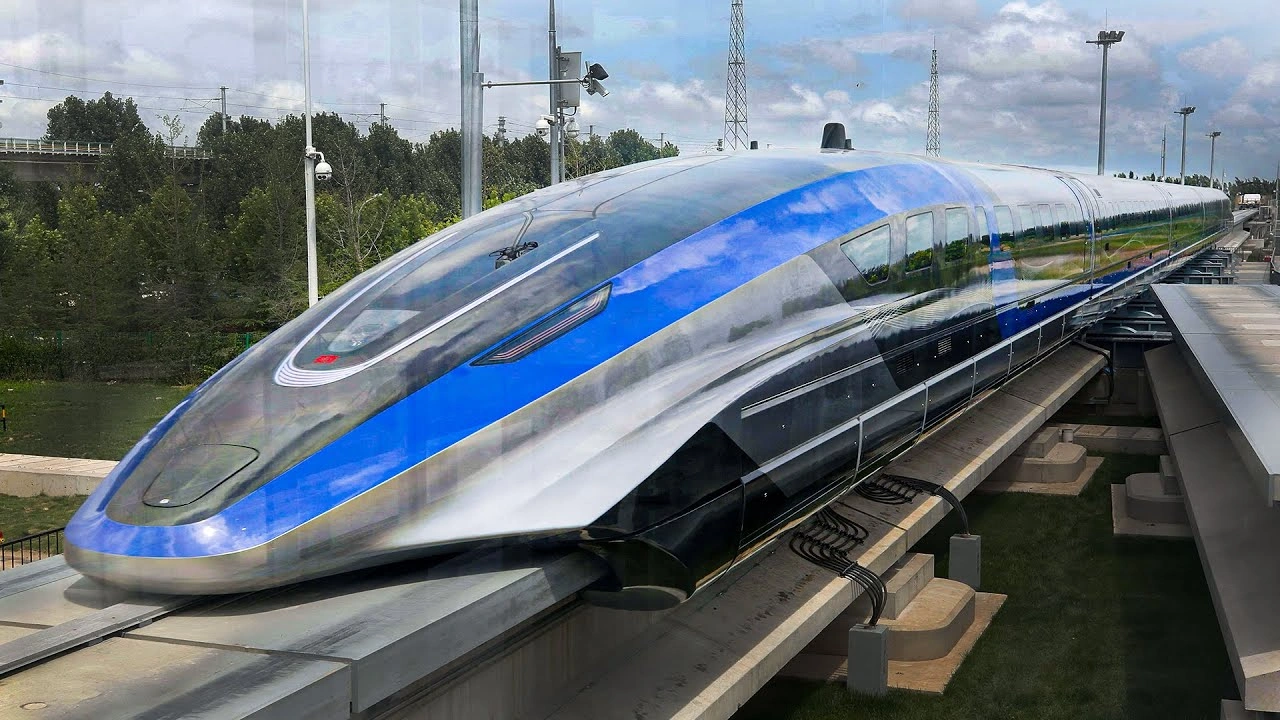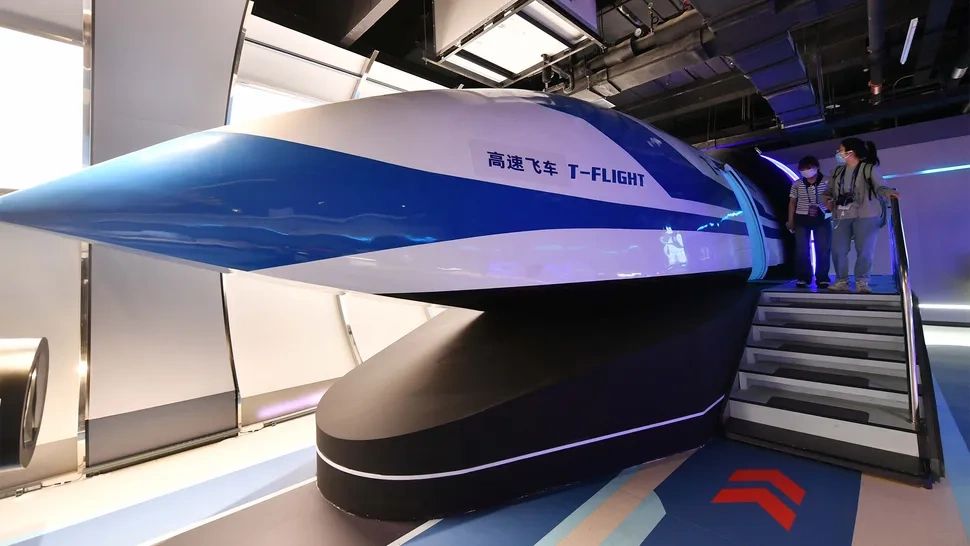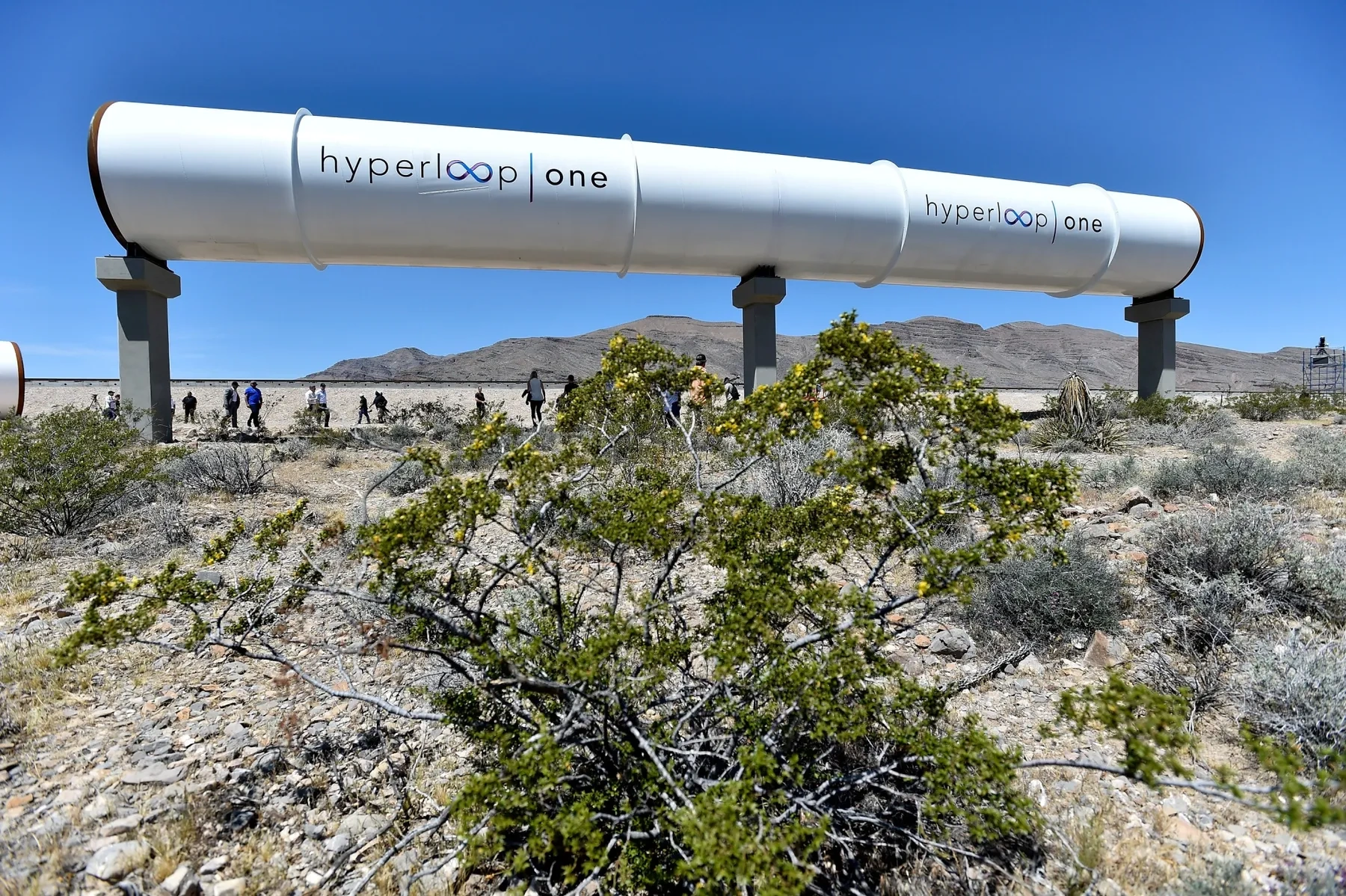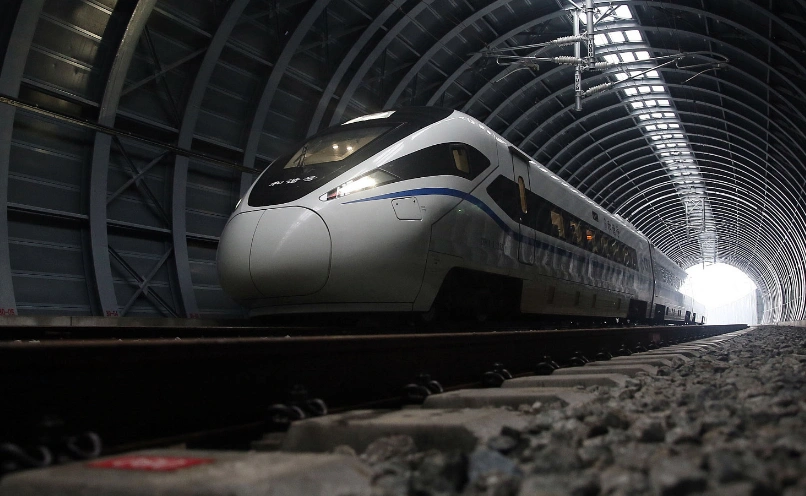China’s New High-Speed Train Is Turning Musk’s Failed Idea into Reality
 China’s 600 km/h high-speed maglev traffic system rolled off the line in 2021
China’s 600 km/h high-speed maglev traffic system rolled off the line in 2021
In 2013, Elon Musk proposed the idea of a pod that could whisk passengers from Los Angeles to San Francisco in just 35 minutes, describing it as “feeling a lot like being on an airplane.” Now, China is turning this vision into reality.
According to South China Morning Post on December 1, a research team from Southeast University found that simply laying two parallel cables inside the wall of the tube could provide 5G connectivity to China’s new generation of high-speed train—maglev hyperloop train.
The maglev hyperloop system, also known as the “high-speed flying train,” is designed to reach a top speed of 1,000 km/h, faster than most airplanes. The superconducting maglev technology levitates the train to eliminate friction as it travels through the specially designed low-vacuum tube. The near-vacuum conditions reduce air resistance, allowing the train to “fly” just above the ground at ultra-high speeds.
 China’s maglev hyperloop train developed by the China Aerospace Science and Industry Corporation
China’s maglev hyperloop train developed by the China Aerospace Science and Industry Corporation
For years, many believed Elon Musk’s dream of hyperloop trains would be the first to break through. A former SpaceX subsidiary, the Boring Company, spun out as a separate business in 2018, did build a few short tunnels, including a mile-long prototype tube near SpaceX headquarters in Hawthorne, California. However, other proposed loops never materialized. In 2023, American startup Hyperloop One, which was highly touted by Musk and had secured over $450 million since its launch in 2014, quietly shut its doors.
 Hyperloop tubes tested by Hyperloop One
Hyperloop tubes tested by Hyperloop One
However, In August of this year, Chinese scientists successfully ran a train in a 2km low-vacuum tube. According to Science and Technology Daily, during the test, the train could navigate accurately, stay stable and stop safely. The system, developed by the China Aerospace Science and Industry Corporation (CASIC), integrates space technology with ground transportation. According to CASIC, the current test results have surpassed 622 km/h, while the world’s fastest operational train, China’s Shanghai Maglev, can only reach 460 km/h. Clearly, this sci-fi technology is no longer just a fantasy—China is making it happen.
Moreover, China’s high-speed flying train offers more than just shorter travel times. Traditionally, airplanes have been the preferred choice for long-distance travel. For example, traveling from Shanghai to Beijing by plane takes about 2 hours, while even the current fastest high-speed train takes about 4 and a half hours.
However, airplanes produce significantly more carbon emissions compared to trains. According to the International Energy Agency (IEA), the transport sector is the second-largest source of carbon emissions globally, with aviation emissions rising rapidly over the past two decades. In 2019, aviation alone contributed approximately 1 billion tons of carbon dioxide, accounting for nearly 2.8% of global emissions from fossil fuel combustion. Additionally, aviation emissions have been growing even faster than any other transport and have more than doubled between 1990 and 2019.
 Global CO2 emissions from aviation have quadrupled since the 1960s
Global CO2 emissions from aviation have quadrupled since the 1960s
But now, China’s “flying train” offers a faster and more environmentally friendly alternative to airplanes. It could cut travel time between Beijing and Shanghai to just 90 minutes while significantly lowering carbon emissions and other pollutants, as it is fully powered by electricity. Currently, China’s high-speed rail network has already led to a substantial reduction in greenhouse gas emissions. A study published in the journal Nature Climate Change found that the high-speed railway has annually reduced over 11 million tonnes of carbon dioxide, equal to 1.3% of greenhouse gas emissions in China’s transport sector.
On the other hand, the design of this high-speed “flying train” also shows China’s efforts to protect ecosystems. In fact, road traffic and transportation development have posed a threat to the habitats and migration of wild animals. However, this has been a key consideration in the design and construction of China’s railway network. For example, on a section of the Shenzhen-Maoming Railway in Guangdong Province, China has built the world’s first fully enclosed noise barrier for high-speed trains. The barrier, which is over 1 mile long and costs nearly $25 million, was constructed to protect a local bird sanctuary housing more than 30,000 herons. According to Chinese official media, the barrier effectively reduces noise, vibration, and light when the high-speed trains pass through.
 The arched steel structure, with sound insulation and concrete acoustic boards, is less than 1 mile from a local bird sanctuary
The arched steel structure, with sound insulation and concrete acoustic boards, is less than 1 mile from a local bird sanctuary
Now, the new high-speed train is designed to travel entirely inside a low-vacuum tube, allowing it to not only reach greater speeds but also significantly cut down on noise pollution and minimize its environmental impact along the route.



